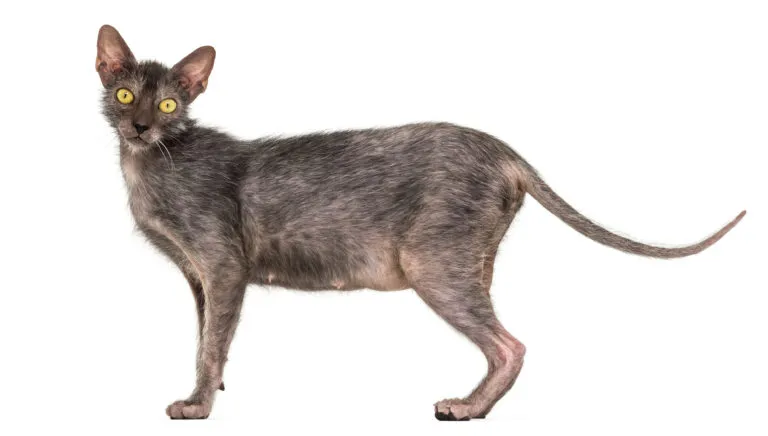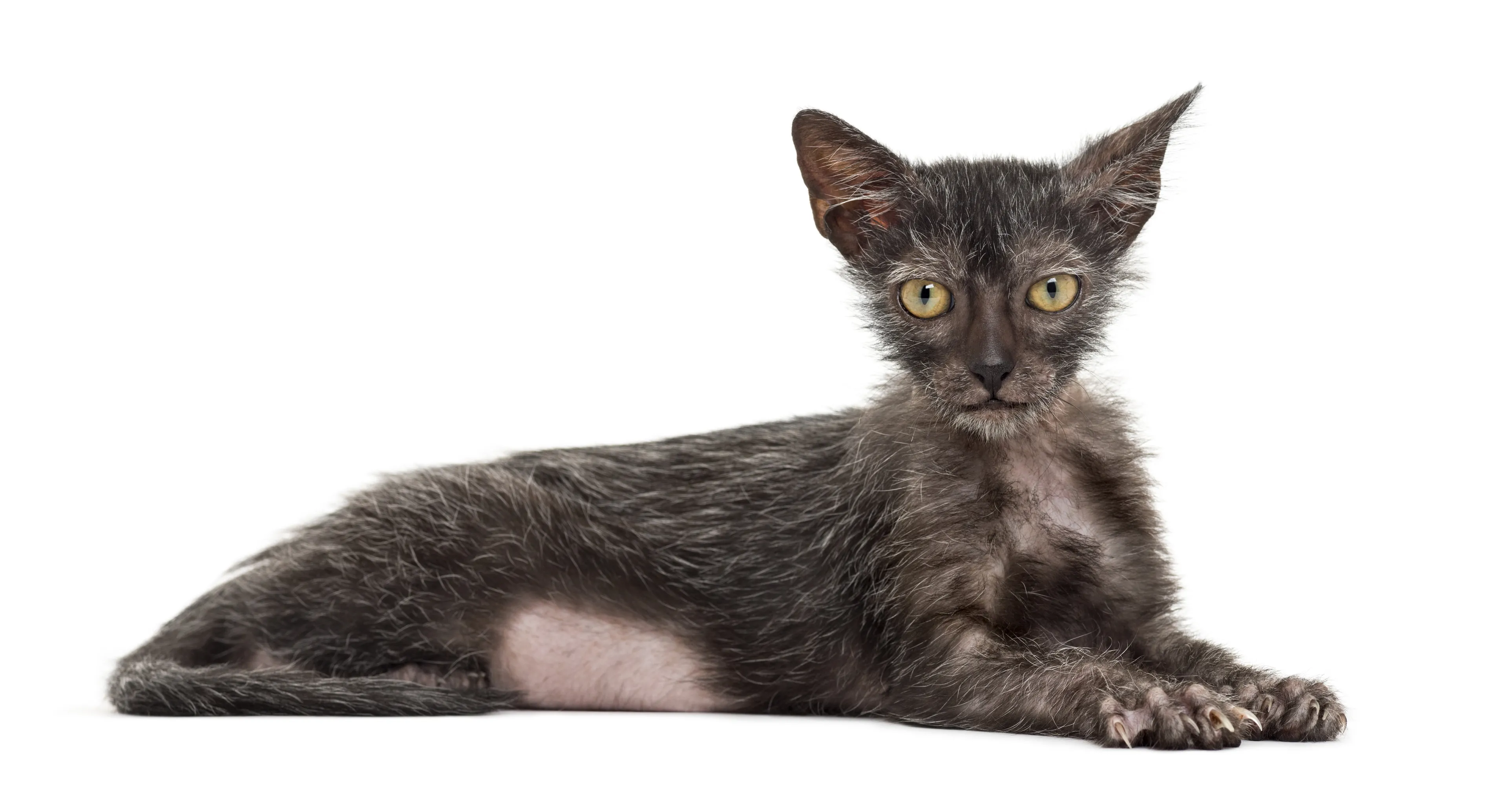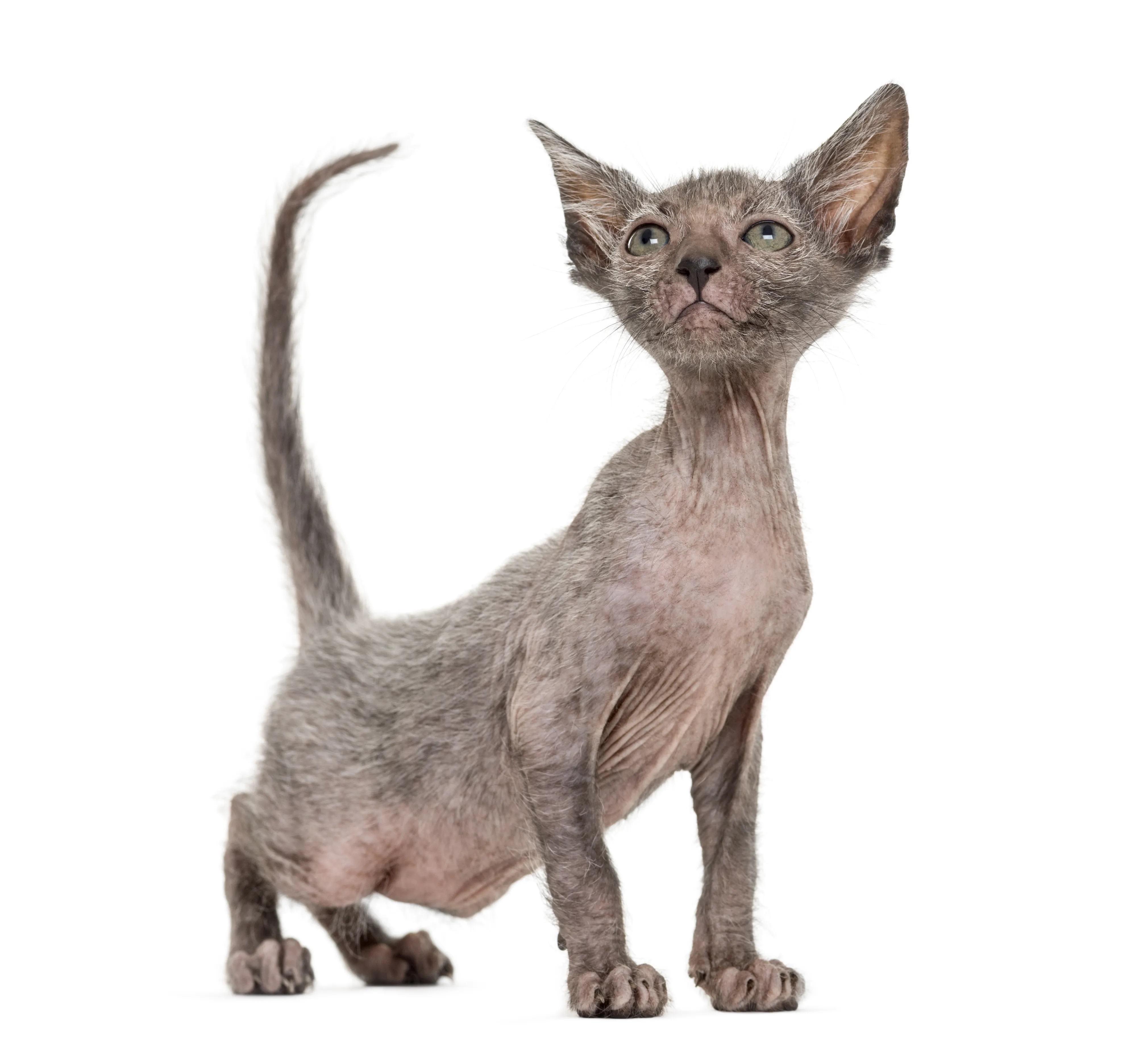Maine Coon
The Maine Coon has now become one of the most popular cat breeds in the world and is enjoying increasing popularity in Ireland, too. This is probably thanks to its authenticity, robustness and excellent character.
The Lykoi (lykos means “wolf” in ancient Greek) may appear like the Hollywood version of a werewolf upon first glance. However, it isn't an invention of the film industry and is in fact a natural mutation of a native short-haired cat.

The history of the bred commenced in 2010, when Patti Thomas, who bred Sphynx cats amongst others, discovered two kittens with a special appearance. Genetic and health tests were thereupon carried out to find out whether the kittens’ unusual appearance was triggered by an illness. It emerged that it could be traced back to a natural mutation. Patti Thomas named the cat “Lykoi” inspired by their physical appearance. She entrusted the cats to Brittney and Johnny Gobble, a vet from the US state of Tennessee who adopted the second pair born with this mutation. After the required tests were carried, breeding of the Lykoi was ready to begin. Gobble has bred plants and animals since he was 15 years old, whilst his wife Brittney is known for her animal photography.
As the name suggests, the Lykoi appears to be some sort of wolf or werewolf in domestic cat format. A recessive gene is responsible for the mutation. Both parent animals need to have it in order for Lykoi kittens to be born. The Lykoi has no hair on some parts of its body, mostly around the eyes, nose, chin, snout and the backs of the ears.
The Lykoi generally has little fur on its legs and paws too, since it has no undercoat. The reason for this is that part of the hair follicles lack the components needed to produce hairs. This is also the reason why the breed moults several times a year, with its fur changing like that of a bird. During this phase, the Lykoi is semi-bald or even totally hairless for a period of time. Females weigh around 2 to 3.2kg on average and males from 3.5 to 4.5kg.
The Lykoi’s fur colour is unique, consisting of white and black hairs adding to the werewolve-like appearance. Colour and the thickness of the fur varies from cat to cat. This special fur colour is described as “roan”, a term well-known with other animals like horses. The Lykoi is the only known cat breed with this colouring.
 © Eric Isselée / stock.adobe.com
© Eric Isselée / stock.adobe.com
The Werewolf cat is on one hand playful by nature and highly curious, but also has a calm demeanour. It has a very friendly nature and values the attention of its human companions. Lykois are very intelligent and love playing with their family. There should definitely be a selection of cat toys, as well as intelligence toys for clever Lykois. Purchasing a second cat is also possible, since Lykois generally get on well with their fellow felines.
John Gobble describes the nature of this cat breed as “intelligent, similar to a hunting dog” and “quite affectionate”. He also outlines how the Lykoi likes to remain in close proximity to its owner. The character of these cats in werewolf form is also described by owners as people-focused and loyal in an almost canine manner.
As dermatologists from a university clinic in Tennessee confirm, Lykoi cats are in principle in good health and can be considered a robust breed. There are hitherto no known diseases specific to the breed.
Read too about Worms affecting cats.
The same essential feeding recommendations apply to the Lykoi as to other pedigree and non-pedigree cats. The choice between wet and dry food is up to you. Wet food has a high moisture content – around 80% – that allows the cat to get enough fluid provision through its food. A good moisture supply is important for the kidneys, amongst other things. Kidney diseases can emerge if the moisture content is low. Make very sure the wet food is of a high quality, which can be recognised not just by the price, but by the impression the ingredients give.
Dry food is recommended when it is given along with wet food.
If not, the low moisture content of dry food of around just 8% can damage the cat’s kidneys. In any case, your cat should always have sufficient access to fresh water in its bowl or from a cat fountain.
Other feeding methods are BARF (biologically appropriate raw food) or self-cooking. It’s important to offer your cat high-quality meat here too. Also, it’s worth noting that these methods require excellent knowledge of your cat’s nutritional requirements, because otherwise it could suffer from deficiency symptoms. Look into the subject in depth and seek out advice from your trusted vet if necessary.
Cat snacks can be given as treats, but never as a primary source of food in order to avoid your beloved cat getting too fat.
 © Eric Isselée / stock.adobe.com
© Eric Isselée / stock.adobe.com
The Lykoi comes at a stiff price of around 1,800 euros. There is a highly limited number of breeders, with the Lykoi breed much more prominent in the US than Europe. There are currently around 30 breeders worldwide.
According to genetic examinations, the Lykoi isn’t subject to a mutation of the krt71 gene, which leads to the emergence of the Devon Rex and Sphynx pedigree cats. Breeding is concentrated on black cats with the special gene that brings about the Lykoi, since these cats are most similar in form to werewolves as we humans imagine them. As well, common black domestic cats are crossed in order to expand the gene pool.
There are some certain fundamental aspects that must be considered when choosing a responsible breeder. For instance, an indicator of responsibility is that the breeder doesn’t give the kittens before the age of 12 weeks. In addition, trustworthy breeders limit themselves to just one or two breeds, because breeding requires very extensive knowledge of the cat breeds in question. As well, the breeder should be a member of a recognised cat breeding association. There are other clear indicators for the breeder’s reliability, such as the condition of the place where the kittens live. Of course, this also includes the state of the food bowls. Aside from all recommendations, your intuition is ultimately decisive.
Discover our selection of cat food and cat accessories.
The Maine Coon has now become one of the most popular cat breeds in the world and is enjoying increasing popularity in Ireland, too. This is probably thanks to its authenticity, robustness and excellent character.
Neva Masquerade – a mysterious name for a mysterious thing of beauty! The Neva Masquerade is the point variation on the Siberian cat and shares many characteristics with this breed.